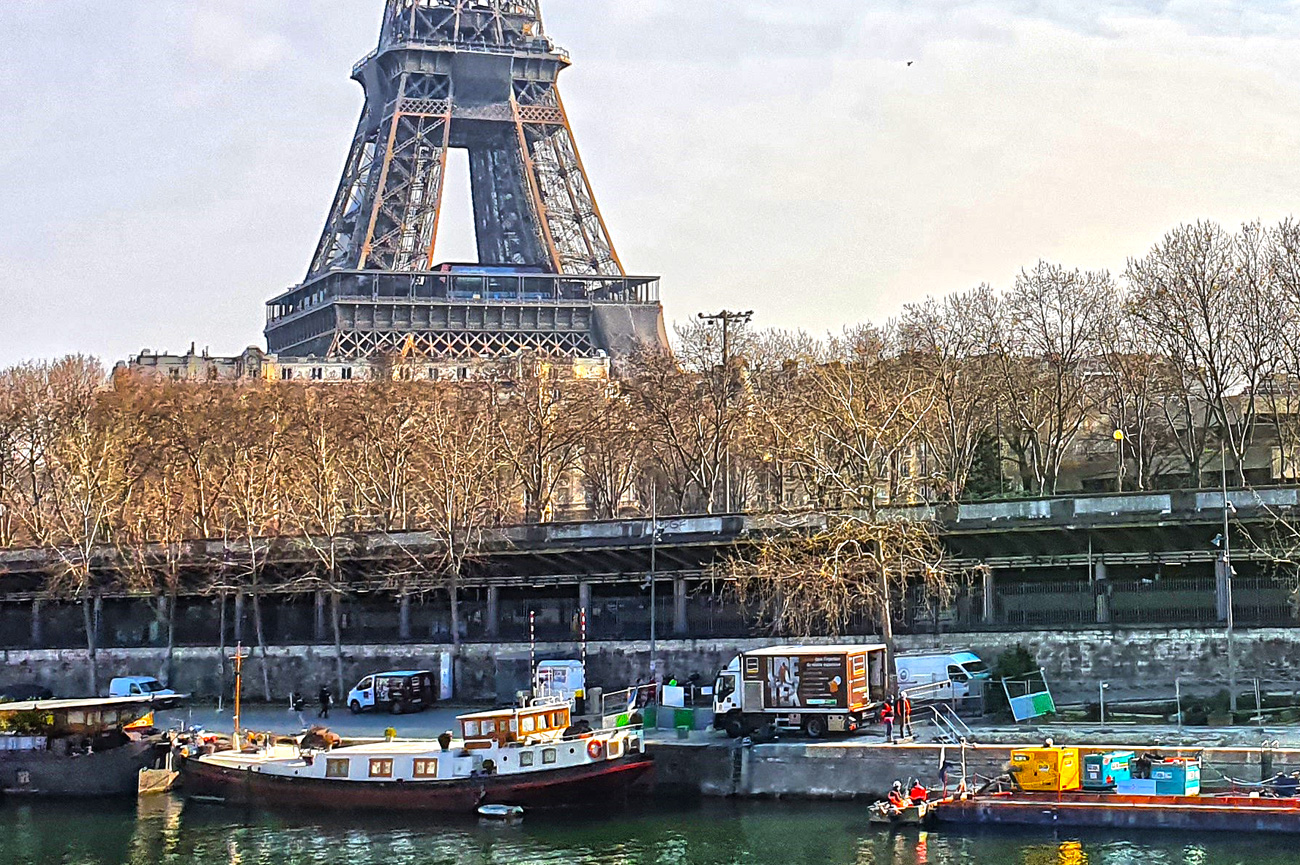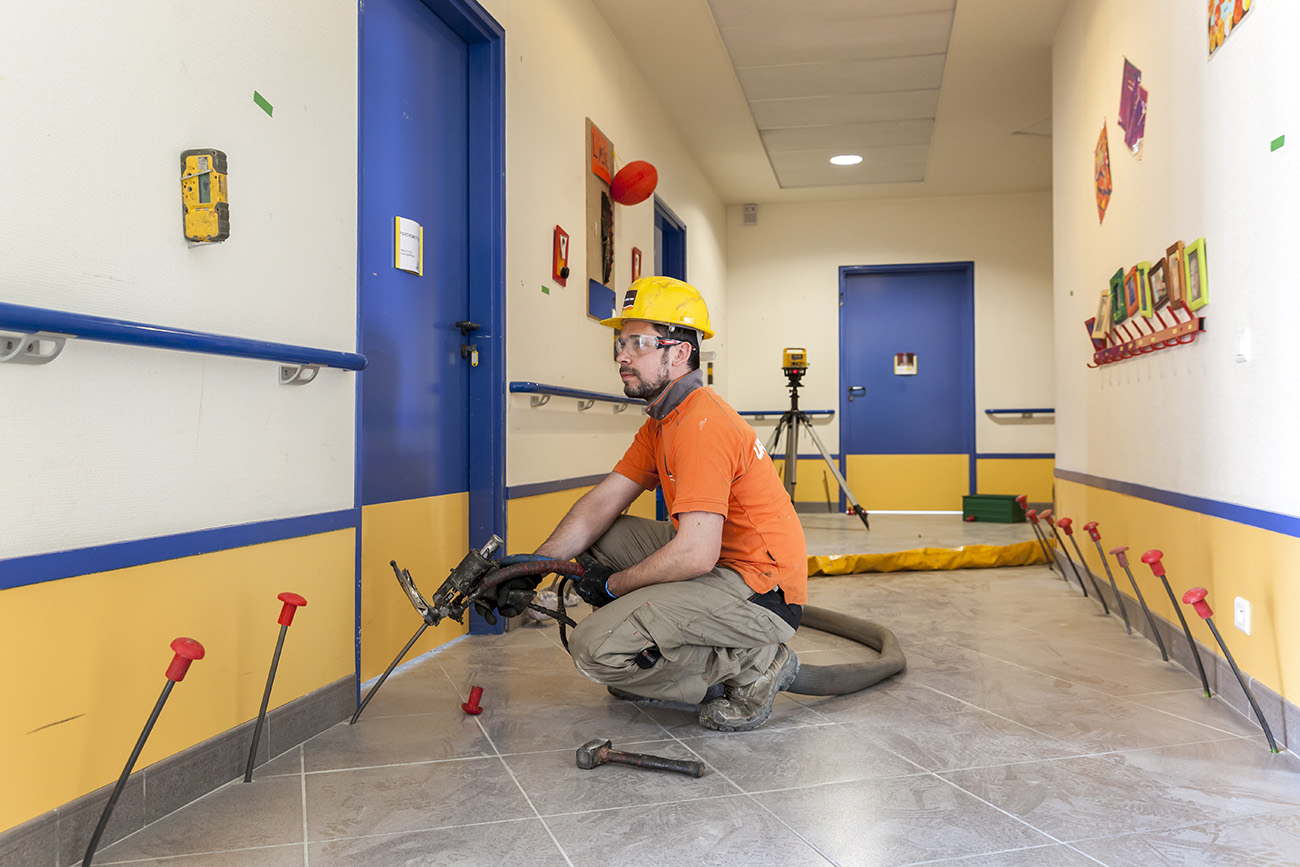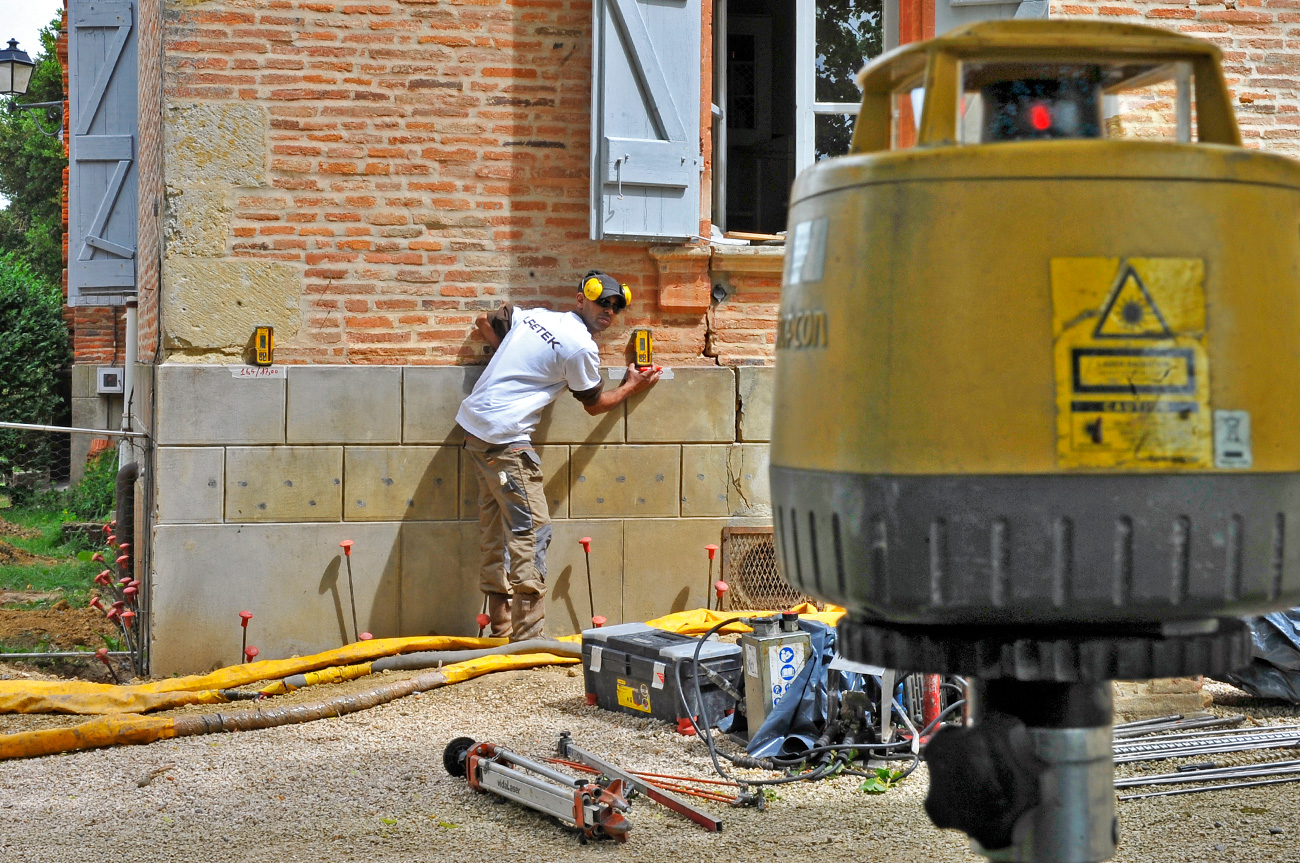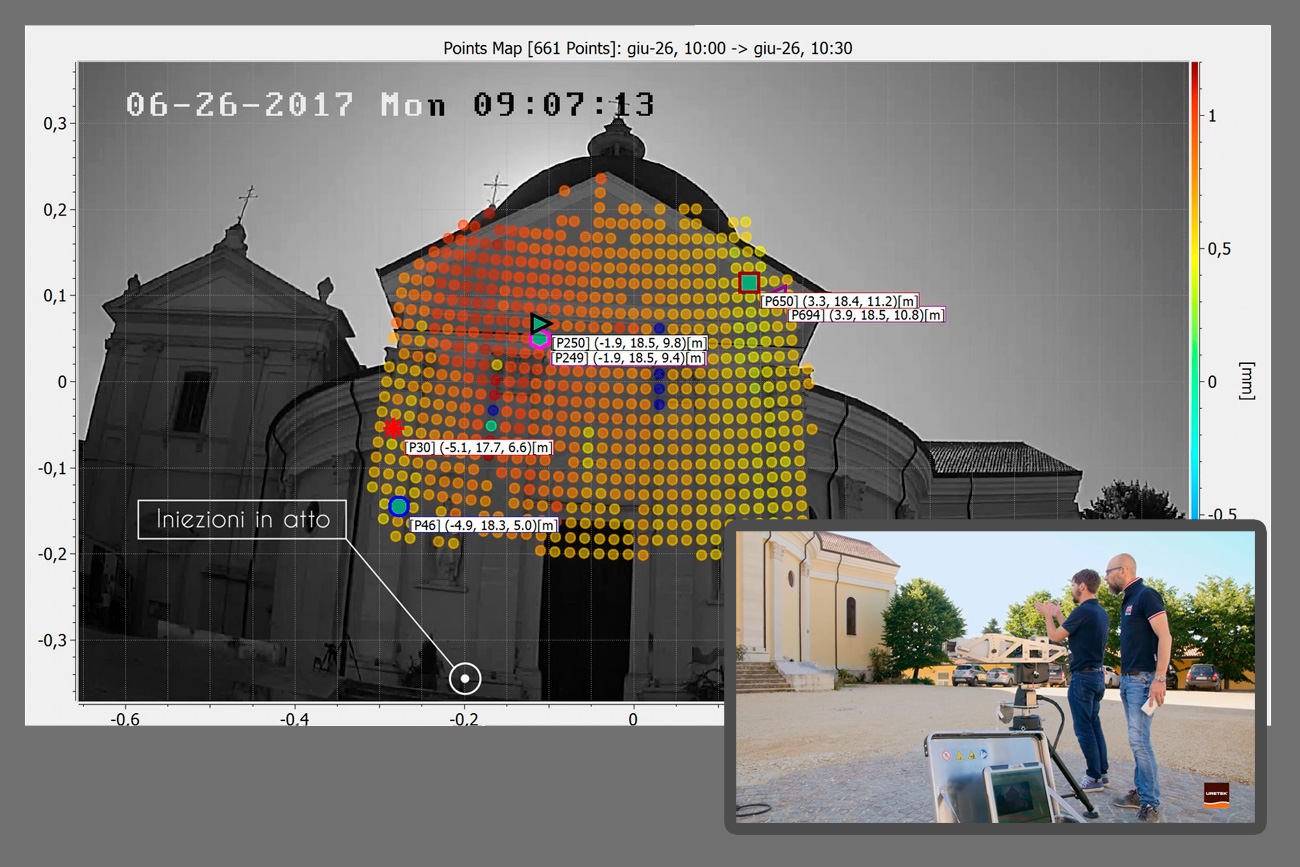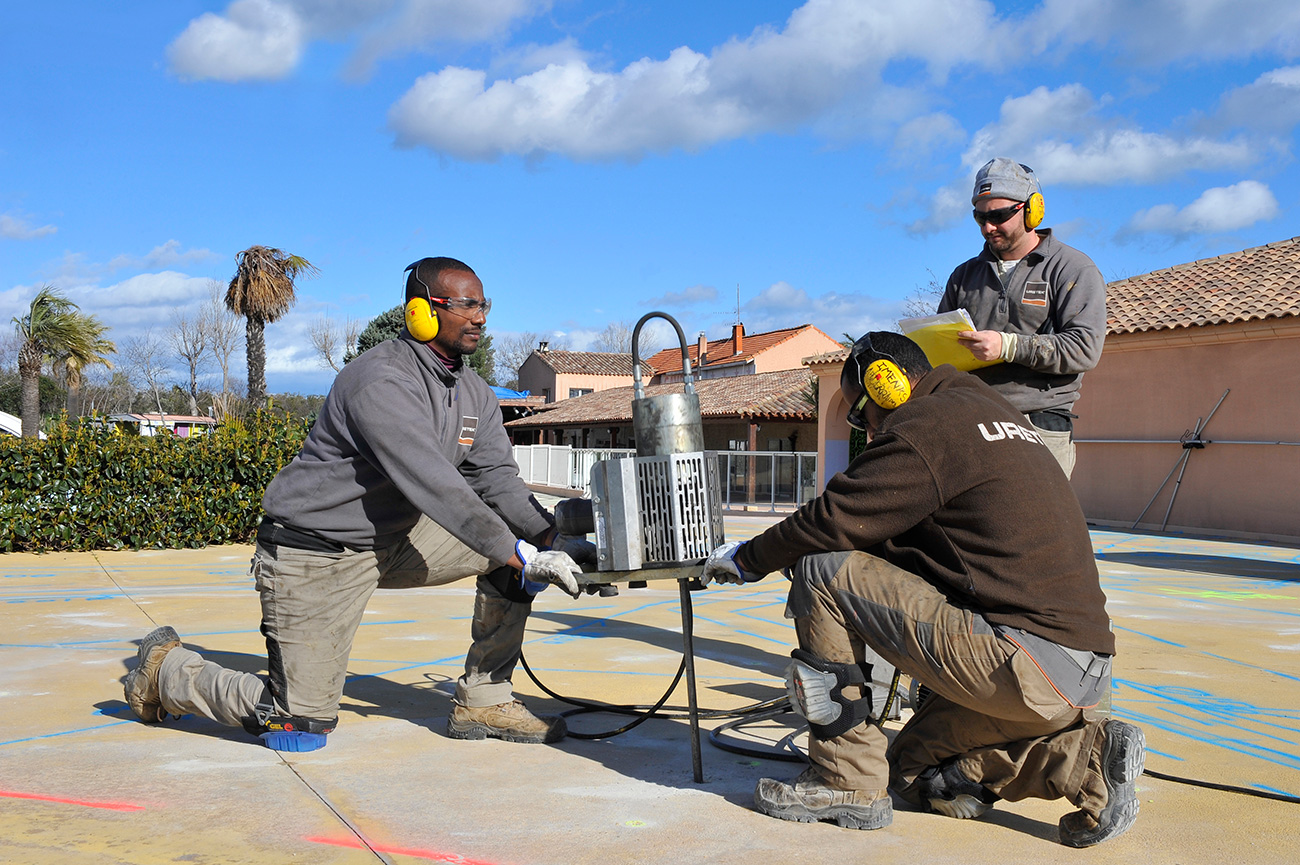Consolidation of foundation soil
WHAT IS YOUR NEED?
We strengthen structures and foundation soil with expanding resin injections
With the Uretek Deep Injections® technology, which is based on injecting Uretek GeoPlus® expanding resins, we can solve any foundation soil subsidence problem. We have 5 different types of expanding resin and choose which one to inject based on the properties of the soil and the type of intervention.
We work out of fully equipped, autonomous shop trucks. We offer a clean, immediately effective solution.
We measure the lifting of the structures with laser or radar instruments to verify the effectiveness of the intervention.
The lifting shows that the foundation soil has reached a greater degree of compression and density, not only due to contrasting the load above, but also due to the lifting itself, which is much greater. Before and during the operations, we make penetration tests to quantify the effective improvement of the mechanical properties of the soil.
Active for 30 years, we have completed more than 55,000 projects.
The advantages of the Uretek solution for structural consolidation:
![]()
![]()
![]()
![]()
- Uniform, localized treatment that can reach down to 15 metres
- No excavation or masonry work
- Conservation that does not alter or damage the structure
- Small holes (from 6 mm to 26 mm)
- Reliable, precise monitoring via laser or radar for the utmost safety
- Immediately effective results
- Interventions on just part of a structure
- Quick intervention that does not disturb normal activities in progress
- Clean and free of dust and waste
- The resin is stable over time and produced exclusively for Uretek

Fields of application
Structures, houses, and buildings
Churches, monuments, blocks of flats, warehouses
Retaining structures, foundation slabs
Piers, docks, silos, tanks
Cranes
Loading docks
Railway embankments
Purifiers
Building expansions
New installations on industrial surfaces
Pools
Increase in machine weight
Viaduct plinths
Wind turbine blades
- Recovering the lift of terrain caused by subsidence
- Improving the hydraulic and mechanical properties of the soil
- Increasing the lift of the terrain
- Decreasing the risk of liquefaction
- Earthquake resistance
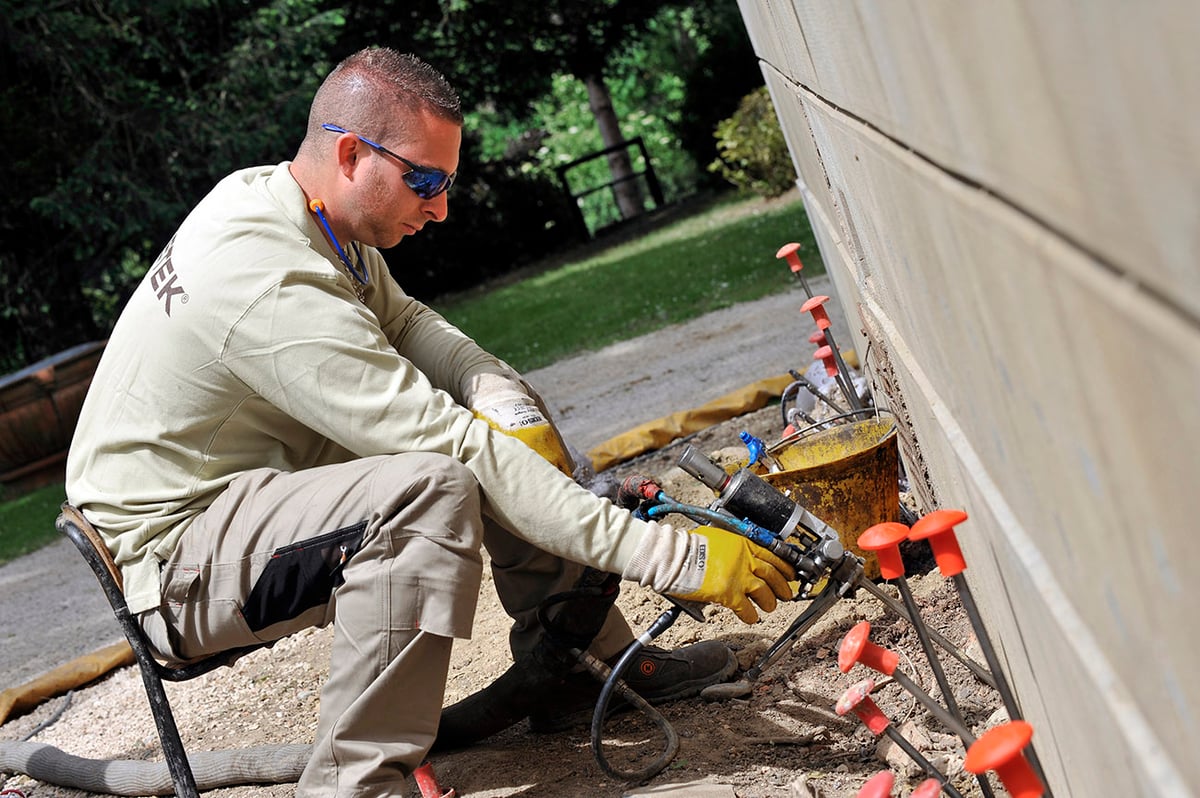

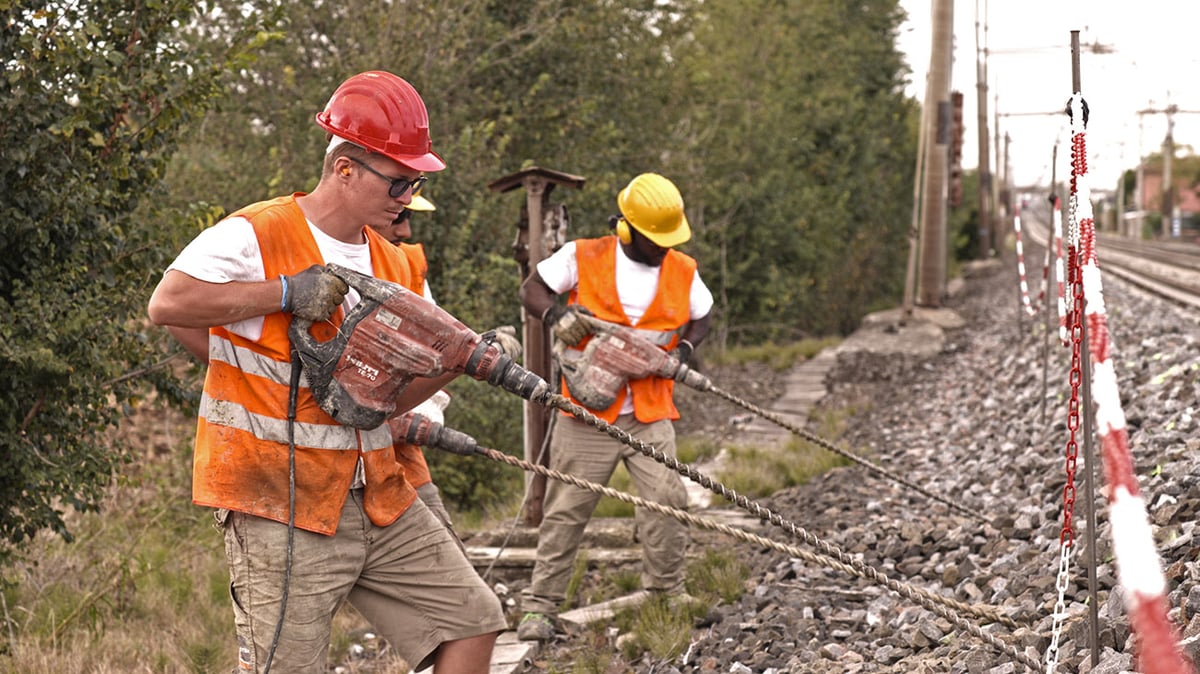
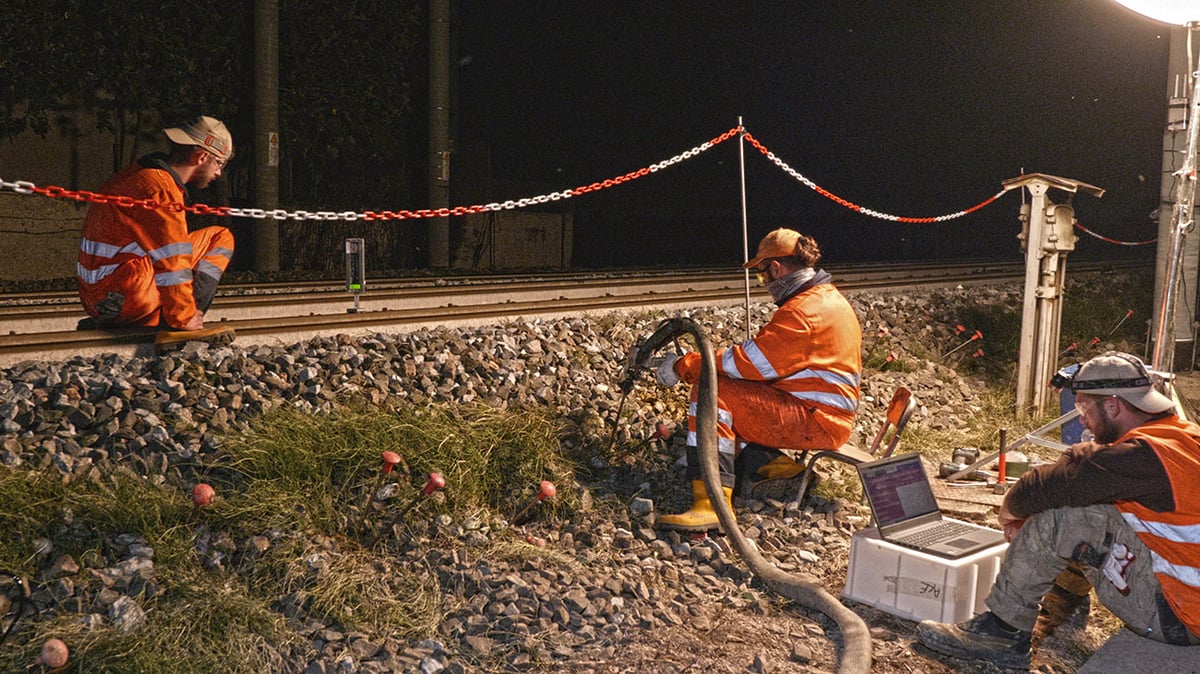

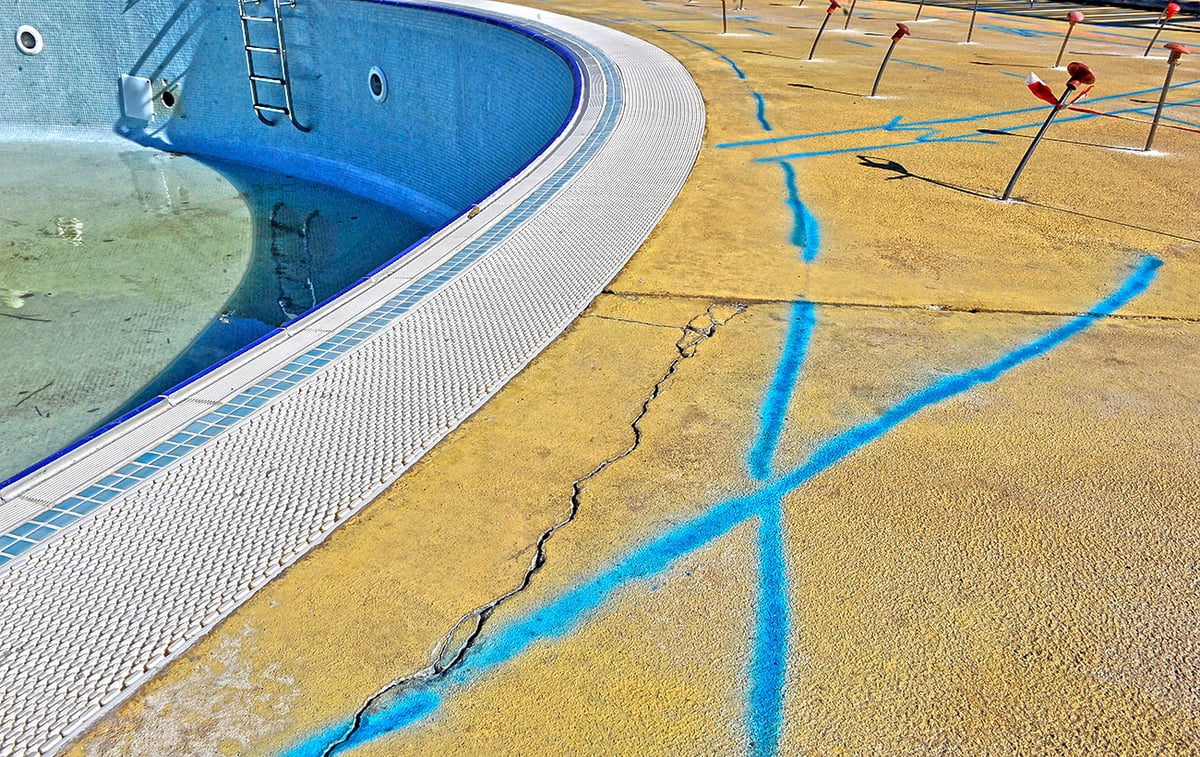

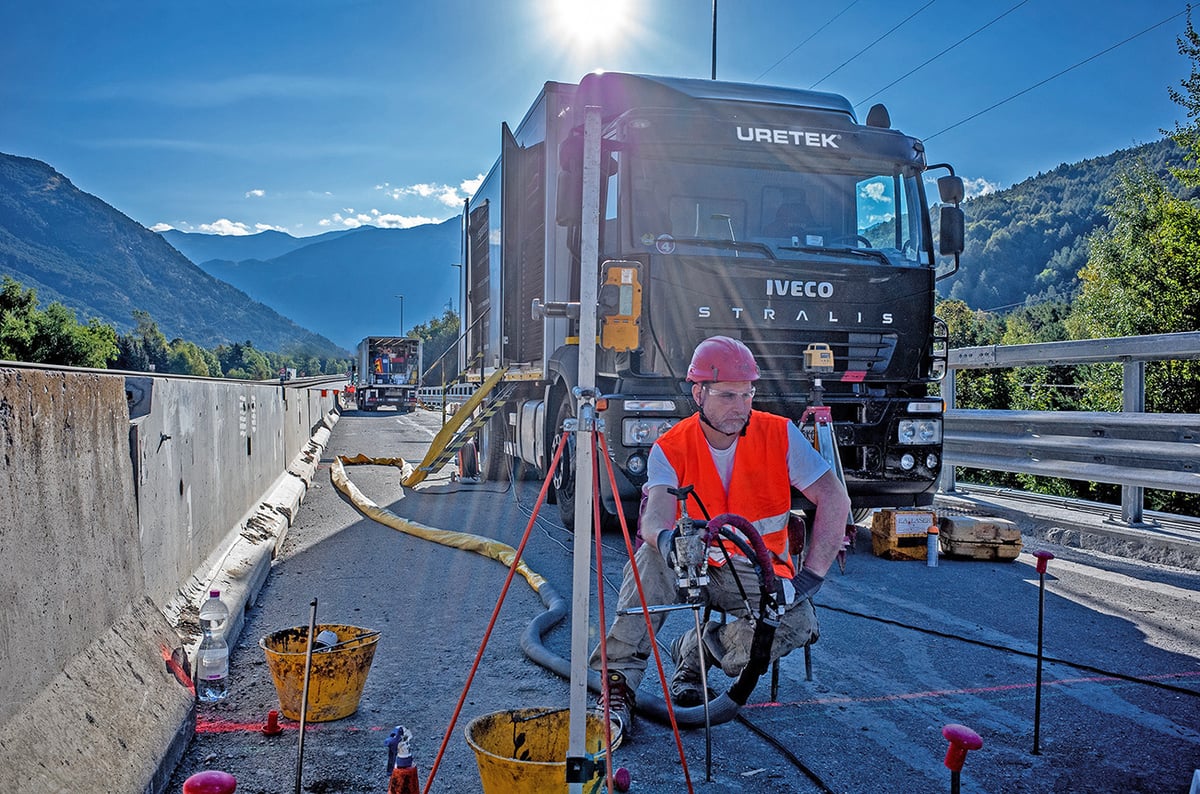



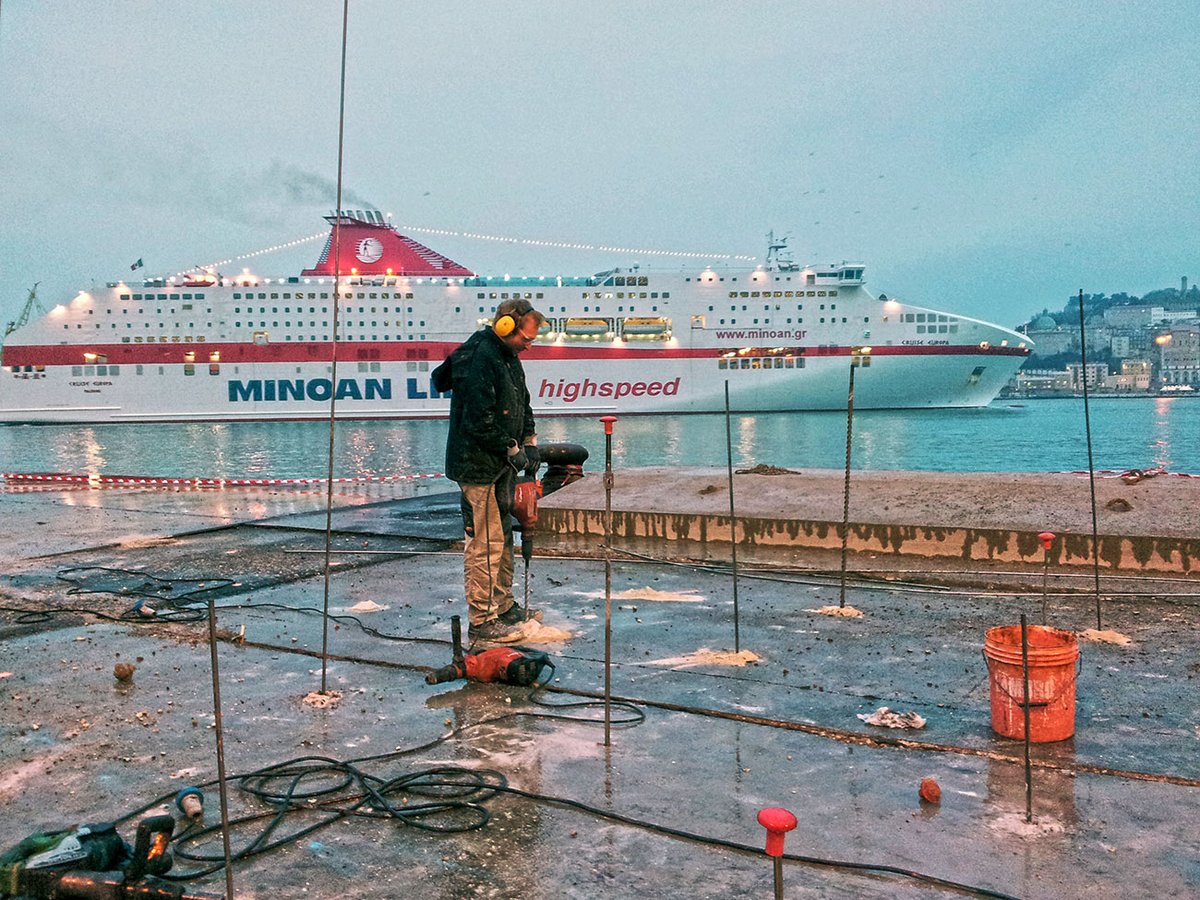
Differential subsidence may be due to:
-
drying of the surface layers of the soil or structural differences in the terrain supporting the building;
-
steep inclinations or overloads near a foundation;
-
excess water (washouts, even due to broken pipes);
-
excavation near the building;
-
partially underground floors or foundations set at various depths;
-
vibrations and liquefaction caused by seismic events.
Independent of the cause of subsidence, we make improvements to allow the soil-structure system to adapt to the new static situation.
We are close to you and we work wherever in the world our professionalism is needed.
We are familiar with your area and bring with us multinational experience.

